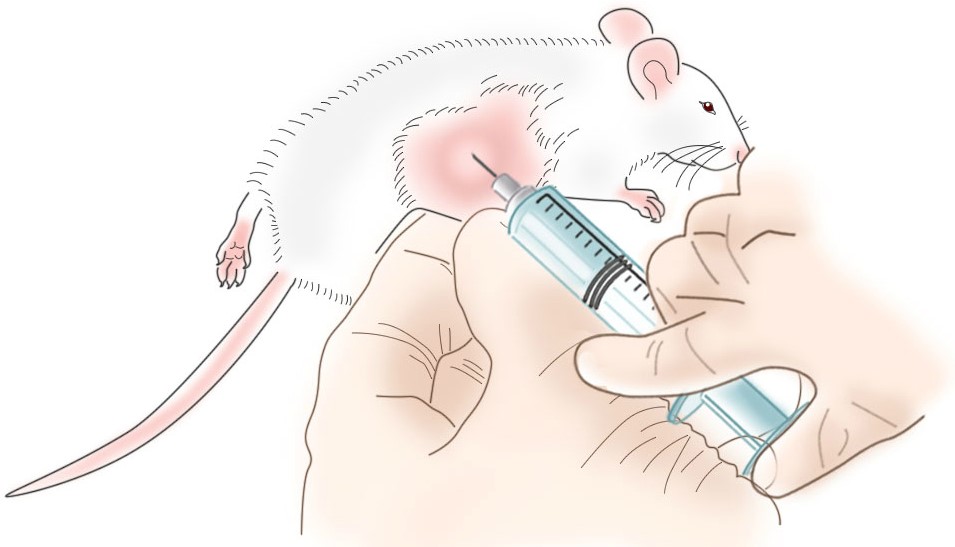
Injection of Clodronate Liposomes within the Dermis
The skin provides the most expansive protection from particulate environmental pathogens and toxins partially through protective phagocytic cells residing in the skin which intercept particulate invaders. Some pathogens or toxins can penetrate intact skin but the highest risk occurs whenever the skin barrier is compromised by injury or disease. Regardless of the mechanism of invasion, upon detection of foreign particles, local phagocytes release cytokines (molecular signals) which solicit systemic immune respondents to the site. Phagocytic cell death due to clodronate liposome administration may also signal the immune system to send reinforcements. Therefore, as with all routes for local administration of clodronate liposomes, concurrent, systemic administration (i.p. or i.v.) of the liposomes is also necessary to prevent systemic phagocytes from repopulating the local phagocytes post-depletion. If systemic depletion is not a part of the protocol, the rate of local phagocyte repopulation must be assessed when interpreting experimental results.
Intradermal injection (i.d. or ID) of clodronate liposomes has been used for elucidating the immune mechanisms involved with skin diseases, such as psoriasis, dermal infections (including systemic infections obtained through the skin) and other antigenic reactions in the skin. Three of the four papers reporting this injection route clearly demonstrated that intradermal injection of liposomes can deplete phagocytic cells within the skin. Both immunohistological methods as well as FACS analyses confirmed the extent of depletion. The other paper evaluated the effect of local phagocytic cells within the skin on the local tissue transfection efficiency, but skin-associated phagocytes, before or after depletion, were not counted.
Some investigators appear to equate intradermal injections with subcutaneous injections through comparisons of results from the two different dosing methods. No papers have been identified which directly compare the two routes of administration for clodronate liposomes, therefore the validity of this assumption cannot be verified. Intradermal and subcutaneous injections should be considered different routes of administration until a direct comparison is evaluated in each model and/or species.
Finally, the animal technician must learn to differentiate between a successful intradermal injection and an accidental subcutaneous injection. Excellent illustrated, detailed descriptions of proper techniques may be found in the following:
1. Mouse injections – Biomethodology for Laboratory Mice , theodora.com, (2004).











